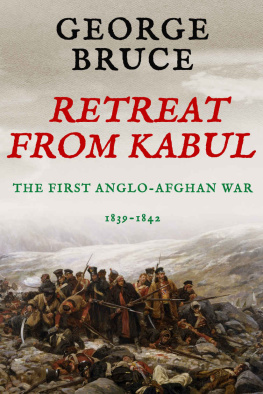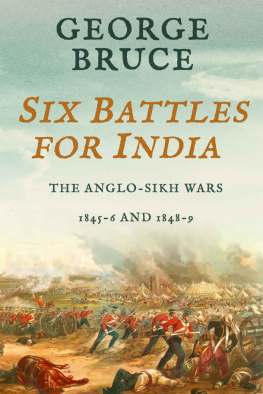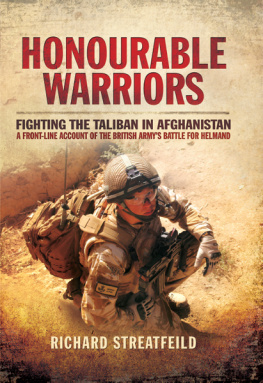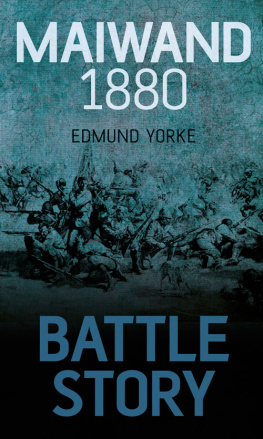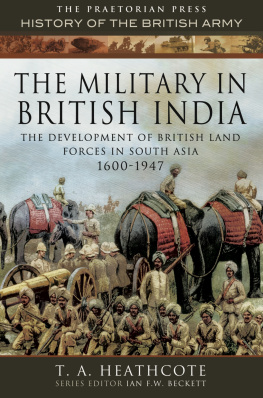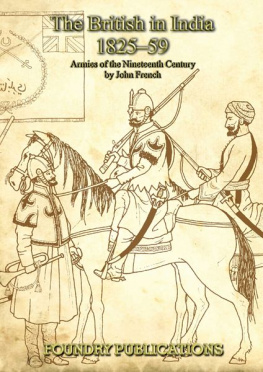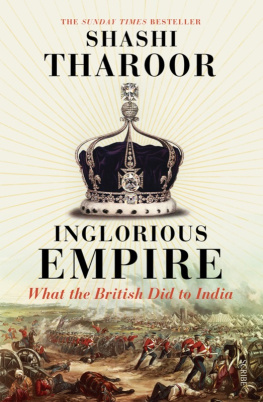RETREAT FROM KABUL
GEORGE BRUCE

TABLE OF CONTENTS
CHAPTER ONE
General Sir John Keane was carried behind the cavalry advance guard in a palanquin borne by relays of Hindu bearers across the plains, mountains and deserts of Afghanistan during the march from India. He was followed by a groom leading his charger and, in a long procession that stretched for 30 or 40 miles across country, by his staff officers, by columns of lumbering horse-drawn artillery, by more cavalry, endless lines of red-coated infantry and the still longer lines of lurching supply and baggage camels intermingled with the host of thousands of camp-followers.
Like a great migrating tribe, the army had marched on Ghazni, in central Afghanistan, at 4 a.m. on 21 July 1839, but four hours later, the fortress which dominated the route to Kabul was still not in sight. Shrugging aside normal military prudence and his dislike for riding horseback, General Keane had then called for his charger, mounted stiffly and, according to Major Hough, Deputy Advocate-General, had ordered his staff officers and a cavalry escort to accompany him on a reconnaissance far ahead of the army across the plain towards Ghazni. Certainly the risks he and his staff faced in this impetuous ride from Afghan marksmen who might be hidden about the plain were great. But Keanes misgivings must have been too strong to be ignored, and with good reason.
He had left his heavy artillery 200 miles behind at Kandahar, and those guns, the 18-pounders, were the only ones capable of blasting a way in for the infantry through walls at Ghazni that might be 15 or 20 feet thick.
Keanes political officers had told him that the Afghans were friendly and would open the gates of the fortress to the British invaders. And his artillery and engineer officers had reported that the walls of the fortress were so weak that the 9-pounder guns and the 24-pounder howitzers could together knock them down if the citizens there were to oppose him. Brigadier Stevenson, commanding artillery, had, moreover, insisted that the transport animals were too weak after the long journey from India to pull the 60-hundredweight 18-pounders and their wagons loaded with nearly a thousand shells.
The terrain ahead of Kandahar, where these discussions had taken place, was far easier than that already traversed, so there was no real substance in this argument. And Ghazni, the Daroos - Sultunut - i - Ghazni seat of the Sultans power was renowned throughout southern Asia for the strength of its fortifications, in contrast to his officers belief, based on secondhand information, that they were tumbledown.
Yet a month ago, when his army was halted at Kandahar, Keane had allowed his subordinates to persuade him, and in what was reported to have been a characteristic flash of temper had let them have their own way and had ordered his heavy artillery to be left behind.
But his predicament was far worse than the admittedly serious one of lack of heavy artillery. The army was dangerously short of food as well. Impetuously, Keane had led his troops and their long train of camp-followers into the middle of a hostile country with insufficient rations either to keep them there or to march them out again.
And now, he had food for his fighting-men for two days only on half-rations.
This scarcity must have been frightening on top of his lack of heavy artillery. It meant that he must somehow seize the fortress and commandeer its provisions within two days.
A siege was out of the question.
To bypass Ghazni and march on towards Kabul, the capital, was impossible too, because Dost Mahommed, the ruler he was to depose, had an army in the field somewhere ahead. Keane could not risk leaving another army behind him in the fortress, ready to stream out and attack him in the rear directly he engaged Dost Mahommed. Nor could he retreat with rations for but two days across country where he would face continual attacks.
These facts must have hounded and oppressed General Keane appallingly as he rode with his staff officers towards the crest of the last hill that overlooked the fortress, where he would be able to judge of its strength for himself and put to the test the alleged friendship of its inhabitants.
A heavy, somewhat dropsical man who rode his horse badly, Sir John Keane was commanding the Anglo-Indian Army of the Indus. It had been formed at the word of Lord Auckland, Governor-General of India, to invade Afghanistan, the wildest, and from the military point of view the most difficult country in southern Asia. Keanes objectives were the overthrow of the present ruler, Dost Mahommed Khan, and his replacement on the throne by Shah Shuja-ool-Mulk, a former king whom the Afghans had expelled some years before.
When Keane reached the crest of the last rise the fortress burst into view a mile or two away. It looked formidable with its fortifications rising up, as it were, on the side of a hill, noted Major Hough, who was at Keanes side.
Keane, through his telescope, could see the massive fortifications, about 70 feet high, built on a steep mound about 120 feet high surrounded by a wide moat a very much bigger and stronger place than had been put to him by Captain Thomson, his engineer and in good repair.
No record exists of what Keane said to Brigadier Stevenson and Captain Thomson at that moment, but neither by nature not habit was he inclined to control his feelings. The scene must have been an explosive one.
His only hope was that the Afghans in the fortress would turn out to be friendly, or could be bribed to be. If not, it would certainly seem that he and his army were doomed.
And at that moment hope returned. One of the political officers, Sir Alexander Burnes, said in a message to Keane that he had just learned that the Afghans had completely abandoned the fortress. This was strange news from the very man who earlier had insisted that they would stay and welcome the British, but there was a chance it could prove true and Keane rode with his staff on towards the orchards and gardens that lay on the plain at the foot of the hill, about a mile from the fortress.
But when they were about 600 yards from the gardens this hope too vanished in sudden puffs of smoke followed by sharp reports and the slow whistle near by of almost spent bullets hardly likely action from a friendly or from an abandoned fortress.
It must have been a very unhappy moment for Keane. He had allowed himself to be talked into treating the occupation of Ghazni as an insignificant episode in the military promenade which Lord Auckland, the Governor-General of India, had light-heartedly called the entire invasion.
Now he was faced by a massive fortress which he had no guns powerful enough to breach; which he was unable to mine owing to the surrounding moat; which was impossible for his infantry to scale and to which he couldnt lay siege because he had only two days food supply.
CHAPTER TWO
Startling though General Keanes incompetence is, far from being singular it is part of a pattern of political and military ineptitude in the conduct of this war that is almost beyond belief. Afghanistan was, and probably still is, one of the hardest countries to invade in the world. In all directions it is ribbed by high mountain ranges cut by narrow passes. Most of its surface is mere rock and though the mountain valleys are very fertile only about five per cent of the total surface is cultivable. It is hot in summer and intensely cold in winter. In the first half of the nineteenth century there were no roads, only narrow stony tracks made during centuries by the feet of animals and men.
In theory Afghanistan was then a monarchy, but the Shah at Kabul was never in the nations history more than the Khan of the most warlike tribe and his authority no more than what he could maintain by diplomatic intrigue and military force.
Next page
